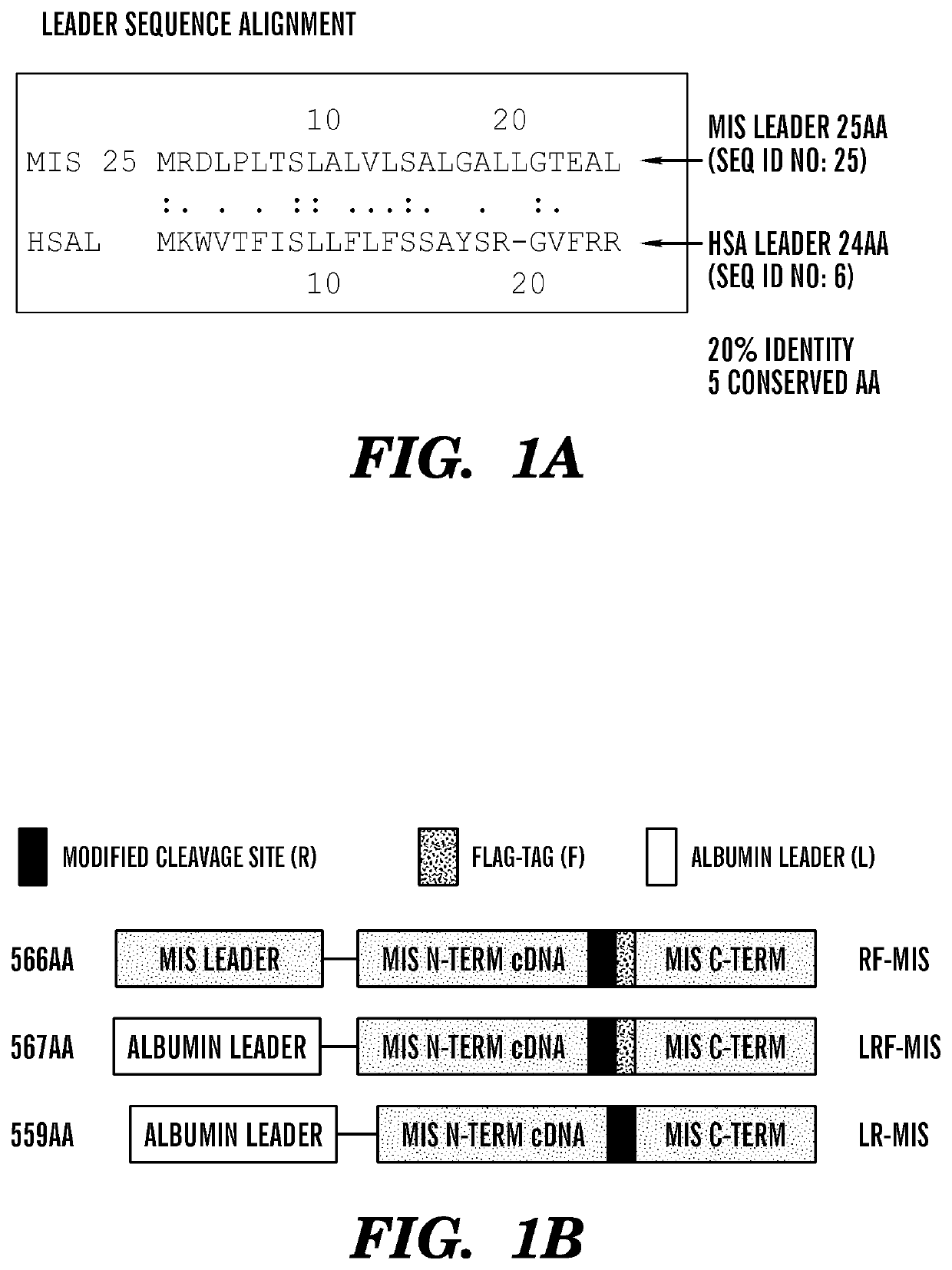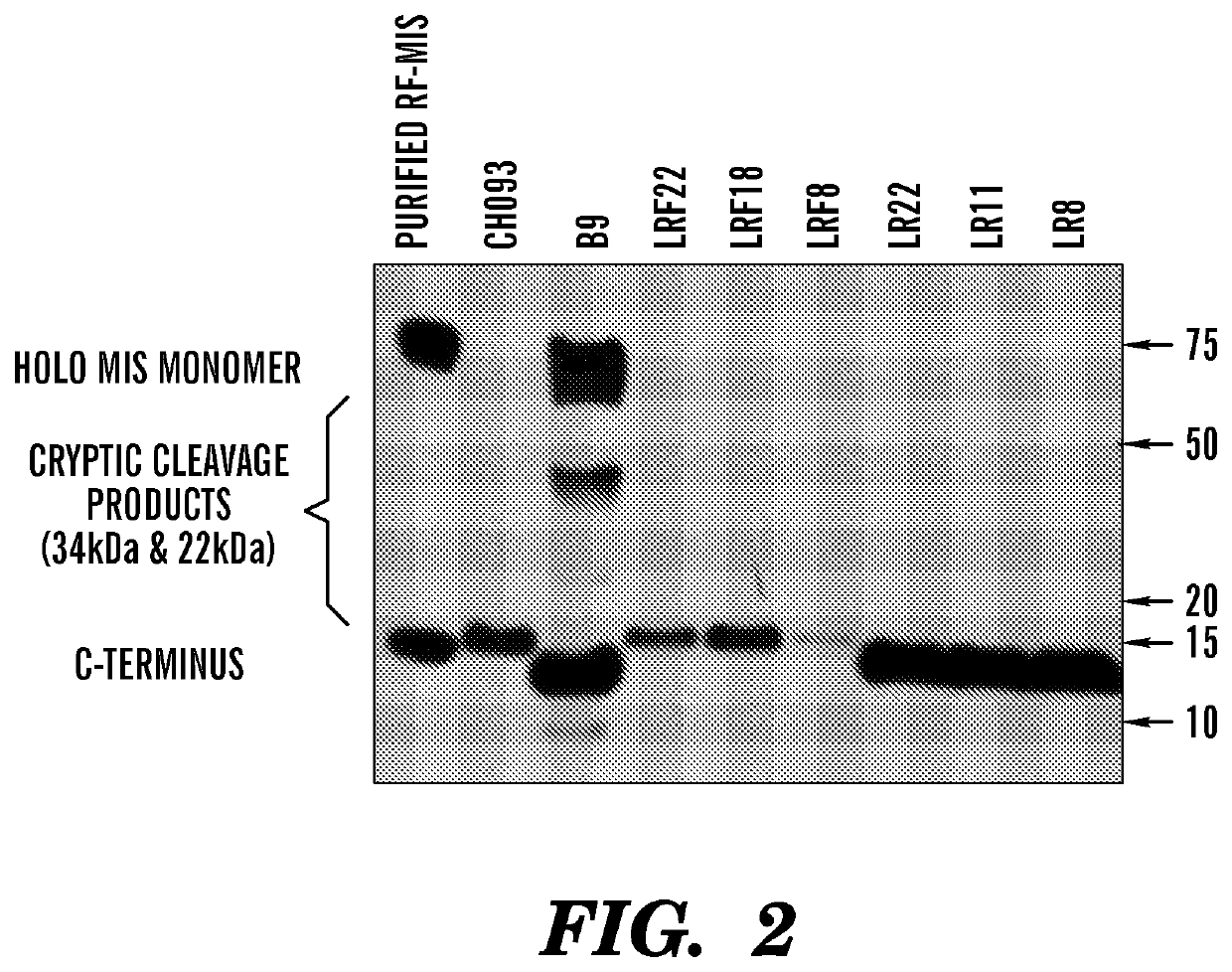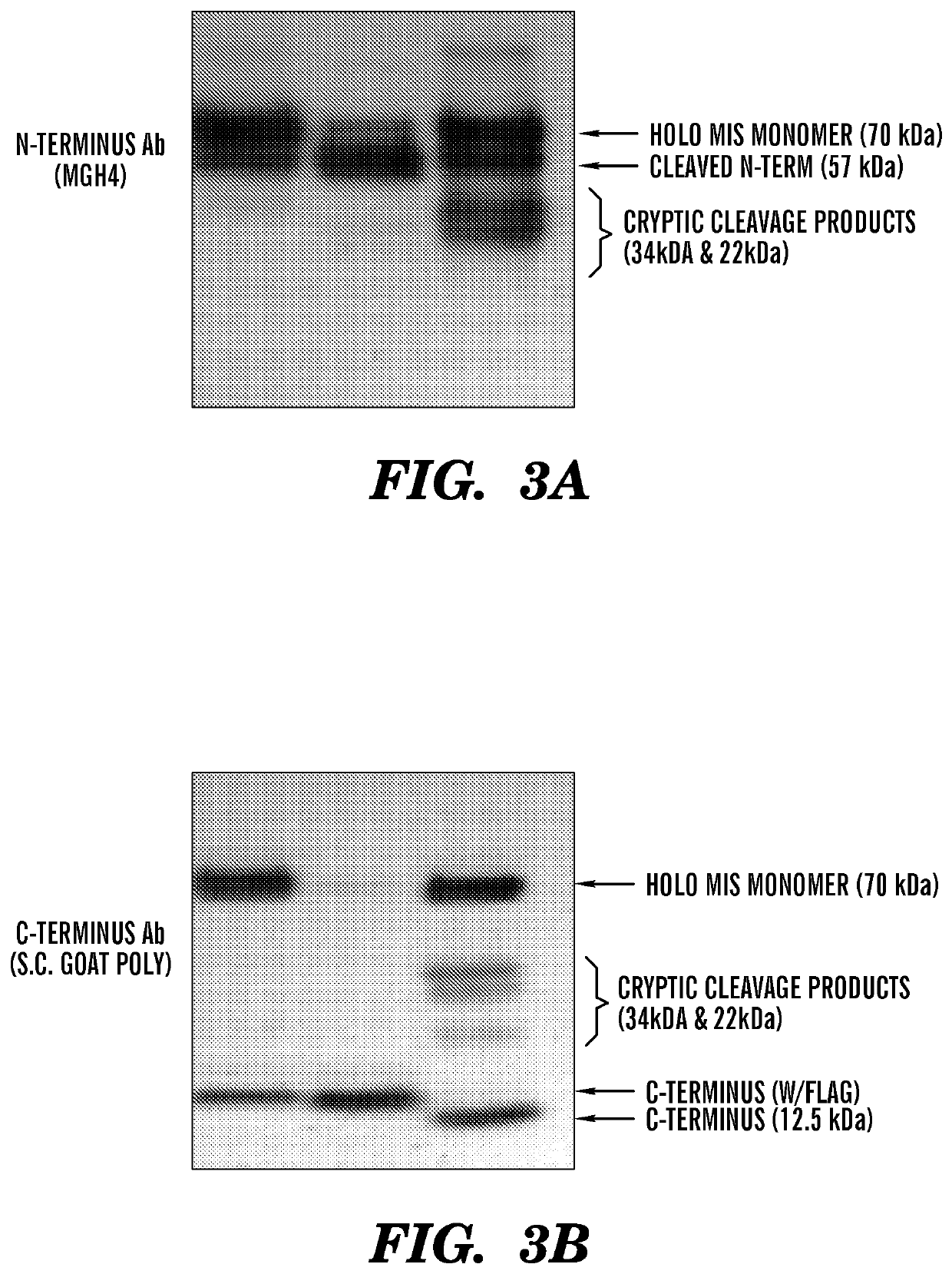Modified Mullerian inhibiting substance (MIS) proteins and uses thereof for the treatment of diseases
a technology of mullerian inhibiting substance and mis protein, which is applied in the direction of hormone peptides, peptide/protein ingredients, drug compositions, etc., can solve the problems of complex preparation resulting from purification of native or wild-type mis, low yield, and inefficient cleavage necessary to produce the active fragment of mis, etc., to improve cleavage, increase potency, and improve the effect of cleavag
- Summary
- Abstract
- Description
- Claims
- Application Information
AI Technical Summary
Benefits of technology
Problems solved by technology
Method used
Image
Examples
example 1
[0483]Purification of Mullerian Inhibiting Substance (MIS) protein for preclinical efficacy (Pieretti-Vanmarcke et al. 2006), has predominantly been done from conditioned media from CHO cells transfected with a genomic clone (Cate et al. 1986). The media was then immunoaffinity purified (Ragin et al. 1992) using a mouse monoclonal antibody (Hudson et al. 1990) or purified by serial chromatography (Lorenzo et al. 2002). Biologic activity was detected in an embryonic organ culture Mullerian duct regression assay (Donahoe et al. 1977) and immunoactivity detected by an ELISA (Hudson et al. 1990) using monoclonal and polyclonal antibodies raised to human MIS. The transfected CHO cells were subsequently adapted to serum free conditions and suspension culture (MacLaughlin / Stafford / Dean, Donahoe unpublished), clonally selected, scaled, and purified as above. Western analysis confirmed 25-30% cleavage to yield the homodimerized C-terminus bioactive moeity which was held in noncovalent associ...
example 2
[0486]Previous efforts to scale up production of human recombinant MIS led us to develop a new construct featuring the cDNA of hMIS with a modified cleavage site at position 427 / 428 inserted into pcDNA3.1 (Papakostas et al, 2010). By substituting the modified RARR / S (SEQ ID NO: 27) for the endogenous RAQR / S (SEQ ID NO: 26) (noted as R in constructs), and inserting a Flag tag immediately downstream of the cleavage site (noted as F in construct) (Table 1) (FIG. 1), the inventors demonstrated increased cleavage of the tagged C-terminus (Papakostas et al, 2010). Furthermore, the recombinant RARR / S-Flag MIS (“RARR / S” disclosed as SEQ ID NO: 27) (referred to herein as “RF-MIS”) protein retained bioactivity in the fetal rat urogenital ridge assay (Papakostas et al, 2010). To overcome low expression yields, the backbone vector of RF-MIS was switched to pAAV-IRES-Neo, and cloned into CHO-S cells, and screened under high Geneticin concentration. The resulting expression vector is polycistroni...
example 3
[0499]LR11 is grown in 5 layer flask with 250 ml of DMEM or in 10 layer flasks (1700 cm2) with 500 ml media supplemented with 10% FFCS, 800 ug / ml of geneticin, 2 nM glutamine, 100 U / ml penicillin and 100 ug / ml streptomycin (Invitrogen) maintained confluent for several months in 5% CO2, at 37 C. Once a week, the media is replaced with a serum-free media which omits FFCS and replaces it with non-essential amino acids (NEAA) and ITS (insulin, transferring, selenium) supplements for 72 h. The media is then concentrated 10× using tangential flow osmosis membranes. Using these methods media of 4-5 ug / ml is concentrated to 25-50 ug / ml, and effective purification yield of LR-MIS rises to approximately 30%.
[0500]
TABLE 4Purification yield from MIS from various constructs using anew serum-free media purification protocol.WT-MISRF-MISLRF-MISLR-MISMIS16.8211.2362.1494.866concentration(μg / ml) at 24hoursProduction7.5970.2540.4301.142(pg / cell / day)Concentration in1.5280.2230.4571.411serum-free media...
PUM
| Property | Measurement | Unit |
|---|---|---|
| time | aaaaa | aaaaa |
| time | aaaaa | aaaaa |
| time | aaaaa | aaaaa |
Abstract
Description
Claims
Application Information
 Login to View More
Login to View More - R&D
- Intellectual Property
- Life Sciences
- Materials
- Tech Scout
- Unparalleled Data Quality
- Higher Quality Content
- 60% Fewer Hallucinations
Browse by: Latest US Patents, China's latest patents, Technical Efficacy Thesaurus, Application Domain, Technology Topic, Popular Technical Reports.
© 2025 PatSnap. All rights reserved.Legal|Privacy policy|Modern Slavery Act Transparency Statement|Sitemap|About US| Contact US: help@patsnap.com



